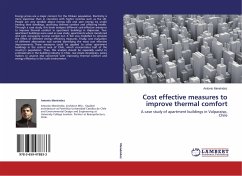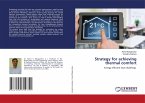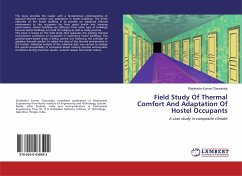Clothing, regarded as a second skin, allows us to adapt or adjust to the thermal conditions in our immediate surrounding environment. It also affects our perception of the thermal environment. This work evaluated the extent to which clothing can influence the adaptation of office workers to their thermal environment. The case study that informed this work was carried out in the hot-humid tropical climate of Enugu, a city located in the southeastern part of Nigeria. One of the key findings was; of all the thermal variables recorded during the field survey, clothing insulation had the strongest correlations to the thermal sensation of participants in the survey compared to indoor operative temperature, outdoor air temperature, relative humidity or metabolic rate. This and other findings indicated that, it is possible for workers in naturally ventilated office buildings in the hot humid climate zone to achieve thermal comfort in higher temperature conditions through clothing adaptation.
Bitte wählen Sie Ihr Anliegen aus.
Rechnungen
Retourenschein anfordern
Bestellstatus
Storno








